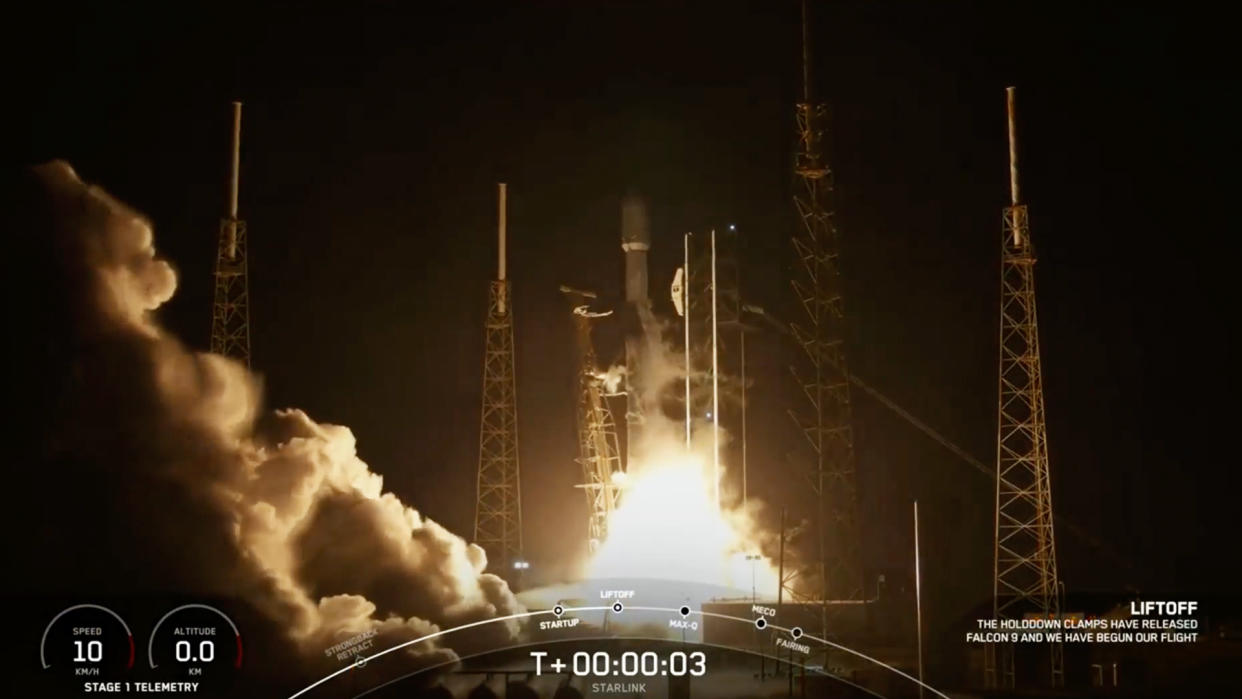SpaceX launches 20 Starlink satellites from Florida early on July 3 after delay (video)

SpaceX launched yet another batch of its Starlink internet satellites from Florida in the wee hours of Wednesday morning (July 3), following a two-hour delay.
A Falcon 9 rocket carrying 20 Starlink spacecraft, including 13 with direct-to-cell capabilities, lifted off from Cape Canaveral Space Force Station on Wednesday at 4:55 a.m. EDT (0855 UTC). While the launch was delayed due to technical issues, the three-hour window for liftoff opened at 2:57 a.m. EDT (0601 GMT).
The Falcon 9's first stage came back to Earth about eight minutes after launch. It will touch down on the droneship called "A Shortfall of Gravitas," stationed in the Atlantic Ocean.
Related: SpaceX unveils new Starlink Mini antenna for internet users on the go

Wednesday's liftoff was the 16th launch and landing for this particular booster, according to a SpaceX mission description. Ten of its 15 flights to date have been Starlink missions.
The Falcon 9's upper stage, meanwhile, continued hauling the 20 satellites to low Earth orbit, where there were deployed about 61 minutes after liftoff.
RELATED STORIES:
— SpaceX launches next-gen US spy satellites and sticks the landing (video)
— 8 ways that SpaceX has transformed spaceflight
— Starlink satellite train: How to see and track it in the night sky
Wednesday morning's launch was the 67th Falcon 9 mission of 2024 already. More than 70% of the rocket's liftoffs this year have been devoted to building out the ever-growing Starlink megaconstellation, which currently consists of more than 6,150 operational satellites.
In addition to this year's Falcon 9 missions, SpaceX has conducted one launch of its powerful Falcon Heavy rocket and two test flights of Starship, the next-gen vehicle the company is developing to help humanity get a toehold on the moon and Mars.
This story was updated at 8 a.m. EDT with news of the successful launch.

